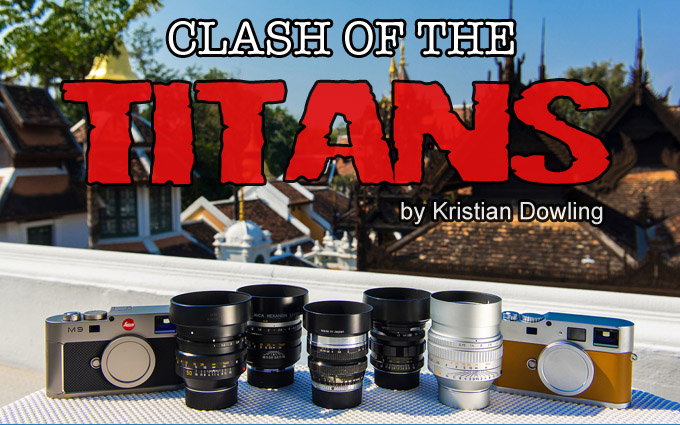
CLASH OF THE TITANS
The Ultimate Leica M Super Fast 50/60mm standard lens battle
by Kristian Dowling – His website is HERE
While Greek mythology brought us the Titans, it was the Germans who applied the Titan qualities to their cars and cameras. Like any good battle, the Japanese also made their presence known with their own version of Samurai. Fast lenses are like fast cars, and when considering both, they share the same kinds of adjectives like ‘exotic, alluring, superlative, amazing, glamorous, extraordinary, unique and unusual’. Both fast cars and fast lenses have an appeal for their ability to give its operator more speed, control and power. To photographers wanting to express their vision through shallow depth of field, the ultra fast lens is a valuable tool, as it enables you to narrow the vision to the exact precise focus position within a frame. But there is much more than subject isolation to think about when analyzing a fast lens. Different lenses exhibit different and unique characters in the way they draw both the focused and defocused areas, and there is no better way to explore this area than by comparing the world’s top Titans.
[ad#Adsense Blog Sq Embed Image]
For the Leica M Rangefinder, the top competitors include lenses from Leica, Konica, Canon, Nikon, Zunow, Fuji, Voigtlander and many more. These fast lenses are large and heavy compared to their slower f/1.4-f/2.8 counterparts, so not exactly great all round lenses, as their qualities are focused around shooting at maximum aperture. They are also very expensive and often the buyer/user may have misconceptions about their perceived performance. Manufacturing a lens that performs consistently throughout all its apertures is the general goal of lens designers, and the faster the lens, the more challenges there are. Therefore there are a few compromises that need to be made. Fast lenses are often not so well corrected for field curvature and/or distortion. Field curvature in this case is an attribute often enjoyed by fast lens users as it can accentuate the effect of the out of focus areas (bokeh), as most notable in the Noctilux 50/1, which is often referred to as the ‘dream lens’, for it’s dream-like, swirly bokeh signature. Often, one caveat of this is that shooting off-center subjects can lead to focus difficulty, especially with a rangefinder where you need to focus in the center, then recompose. I am sure many photographers who have used these kinds of lenses on a rangefinder will tend to agree with such experiences, often resulting in miss-focused and spoiled shots.
I was fortunate enough to have access to the top players in this field in Chiang Mai, Thailand, so decided to put them to the test.
Therefore in this article I will focus my attention to three main factors:
• Bokeh – the way the out of focus areas look and feel.
• Sharpness and contrast around the focus point.
• Signature/Character – the way the lens renders/draws.
• Color – shifting from warm to cold depending on the lens design, coatings used and age of lens.
–
Here are the top 5 most sought after lenses for the M System being tested.
Leica Noctilux-M 50mm f/0.95 (Hermes edition used for test)
• Released in 2008 for regular production
• Current street price US$10,450 (regular black version)
• This is the largest lens in the group with excellent handling and the best build quality. Has a built in hood and is quite easy to focus.
• This lens was manufactured with modern lens design so I expect the sharpness and contrast to be excellent wide open with neutral bokeh. From my own experience owning this lens, it is extremely well corrected for such a fast lens and doesn’t exhibit many flaws except for purple fringing wide open against bright light sources.
–
Leica Noctilux-M 50mm f/1.2
• Released in 1976 with production limited to only 1700 units
• Current street price US$20,000+
• Leica’s first Noctilux is quite small in size, closer to the Summilux than the Noctilux f/1.
• I have yet to use this lens and as Leica’s first Noctilux, I expect contrast to be low and sharpness average, but possibly better than the f/1 Noct as f/1.2 lenses are easier to produce. I’m really not sure what to expect from the bokeh – possibly a little messy.
–
Leica Noctilux-M 50mm f/1
• Released 1976-2008 for regular production with several cosmetic changes during this time
• Current street price US$5,000+
• Quiet a large lens, slightly smaller than the Noct 0.95 but bigger than it’s older 1.2 brother, with average handling and slightly difficult focus.
• Known for it’s dreamy bokeh and slightly soft rendering I’ve always felt this lens is a one trick pony and best used with subjects centered due to the large amount of field curvature.
–
Konica Hexanon 60m f/1.2 Original Design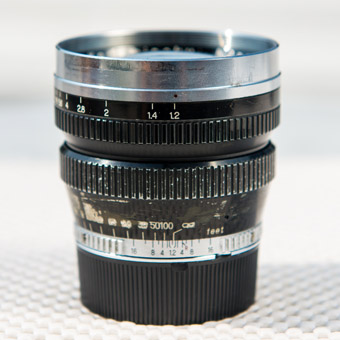
• Released 1956 for limited production with numbers unknown, but very rare
• Current street price US$13,000+
• A small lens for it’s design with nice handling and very smooth aperture transition. It’s a screw mount lens so requires a screw to M mount adapter, preferably with 50mm lens frame selection.
• I have never used this lens before but due to it’s age I expect very low contrast wide open. I have no idea about it’s potential for sharpness.
–
Konica Hexanon 60m f/1.2 Updated Design
• Released 1998 with production limited to only 800 units
• Current street price US$12,000+
• Small in size, similar to the Noctilux 50/1.2, the Hexanon
• Like it’s older brother, it’s a screw mount lens so requires a screw to M mount adapter, preferably with 50mm lens frame selection.
• Unlike it’s older brother it was designed with modern lens design, optimized for excellent sharpness and contrast at wide apertures. This lens was made famous by street photographer Yanick Delafoge http://www.yanidel.net. I always say “pictures sell lenses” and Yanick’s amazing street pictures from his travels around the world have single handedly raised the value of this lens from $3k to $7k+ in a matter of a few years. According to Yanick, this lens is the sharpest standard lens at f/1.4, and from my own experience owning this lens, I would be confident agreeing with him.
–
Testing parameters:
• Camera used in test is the Leica M9 and (some) M Monochrom, all shot in manual exposure for consistency. Exposure will be adjusted to lighting changes.
• No tripod used as this is a field test, not an MTF or resolution test
• 3 hour time frame with model and lenses available for testing
• All exposures were recorded on paper with filename/lens used
• All images were shot wide open at maximum aperture of each lens, ranging from f/0.95 to f/1.2.
–
Testing restrictions:
• Testing was done outside in the field so lighting changes in strength and color temperature will occur.
• No testing for CA/purple fringing on color digital sensors.
• No comparison of the lenses at the same apertures, which all would share at f/1.2 and up. Comparisons are for wide open to establish their ‘individual’ maximum abilities and characteristics.
• Such lenses are favoured for their abilities in low light as they allow both a lower ISO and/or higher shutter speeds, but I will not be testing for this.
• No testing these lenses for flare/internal reflections against strong light sources such as the sun. It is fair to assume that the newer the lens, the better the coatings and thus, better performance in such situations.
• No testing for distortion. I expect all lenses to exhibit average to poor distortion control and high field curvature as most fast lenses are designed this way due to the compromises needed in fast lens design.
• Lenses may suffer from slight sample variation, and therefore may not be 100% representative of the lens in general.
–
Individual Results – click images for full size files
Leica Noctilux-M 50mm f/0.95
I really like this lens. Its size is large but handles very well and focus is super smooth. It has a sliding built in hood that rotates and locks in, just like it’s smaller brother, the Summilux 50/1.4 ASPH.
I used it on production sets in Hollywood, and enjoyed this lens for it’s ability to represent a scene faithfully, meaning that it has minimal aberrations and field curvature, especially for having such a large f/0.95 maximum aperture. Out of focus elements are represented clearly and without much distortion. This is a very well corrected lens and is my recommendation for those needing a super fast lens for professional client work. Those looking to use this lens for ‘bokeh effect’ should look at other lenses that produce results with less perfection, such as the painterly Hexanon 60/1.2 V2.
Colors were noticeably warmer from this lens and sharpness wide open was exemplary. Contrast was also very high for the 0.95 aperture, matching its sharpness nicely. I would say that at f/0.95, it almost matches the Summilux 50/1.4 ASPH at f/1.4.
–
Leica Noctilux-M 50mm f/1.2
I really like this lens’s size to performance ratio. It’s the smallest lens in the group and renders in a neutral way, leaning slightly towards the newer f/1 version with a hint of ‘dream-like’ rendering.
Being the most expensive lens in this group, I had quite high expectations and hope for sharpness, so I was a little disappointed when I saw softness wide open, and felt the rendering to be a slightly softer character than both the Noct f/1 and the slower Summilux f/1.4. To best describe it’s drawing, I would say it’s a cross between the Noct f/1 and the f/0.95 with a soft rendering. For the money, I would have liked to see a little more character from this lens.
Colors were a little on the warm side which is not a bad thing. Contrast was quite high for such an old lens, which does help raise the perception of sharpness, when the reality is that it’s a little soft wide open at f/1.2.
–
Leica Noctilux-M 50mm f/1
I’ve had a lot of experience with this lens before and have bought and sold it a few times due to it being more of a ‘one-trick-pony’. By that I mean it isn’t so great when stopped down so it’s only really good for shooting wide open to create that ‘dream-like’ effect that has made this lens so famous. I am referring more to the way its bokeh is rendered than actual ‘glow’ as seen from older vintage lenses like the Hexanon 60/1.2 V1.
Due to it’s high field curvature and lack of correction for aberrations, the out of focus areas are very smooth, giving a rounded circular effect, especially noticeable when framing subjects in the center of the frame with a symmetrical background. The focus point isn’t what I’d call sharp, but more so ‘sharp-enough’, and a good step forward from the older and softer Noctilux f/1.2 version.
Focus isn’t as smooth as the Noctilux f/0.95 and the focus throw feels longer in use so I found handling to be a little slow. It’s also quite large and heavy but is also quite modern in the way it draws. It has neutral color balance and has medium contrast wide open, which works well for the way it renders bokeh. Overall, it was a nice improvement from the f/1.2 model it replaced.
–
Konica Hexanon 60m f/1.2 Original Design
I was super excited to try this lens. I’ve only ever seen two for sale and this is one of them, acquired by Bellamy from Japan Camera Hunter http://japancamerahunter.com. I really wasn’t sure what to expect from this lens except for low contrast because I’ve never seen samples from it before, even on film. What surprised me most was the size of this lens. It’s very small and built very well, as you’d expect from Konica.
Out of all the lenses, this is my favorite, due to it’s unique glow qualities, but with excellent sharpness underneath the glow. Contrast is very low, which makes it fantastic on a camera like the M Monochrom, but not as great on the M9. It takes a bit of adjusting to processing these pictures to a modern state of contrast, especially in color. With the lower contrast comes more shadow detail, which was very welcomed when using this on the M Monochrom.
–
Konica Hexanon 60m f/1.2 Updated Design
Out of all these lenses, I would have to rate this lens as the most sought after lens in the M line for users wanting a unique lens that delivers outstanding performance. I have also owned this lens before and it has been the best overall standard lens I’ve ever had the pleasure of owning and using. It’s handling is fantastic. While not being a small lens, it fits well in the hand and focuses very smoothly. It’s also noticeably lighter than the Noct f/1 and f/0.95 lenses.
Sharpness and contrast is medium to high and works beautifully with the way it renders out of focus areas. Just for reference, this lens sharpens up considerably at f/1.4. What I like most about this lens is the way it renders the bokeh. It’s smooth, but with a painterly quality of smaller circles that have more edge definition than those of the Noct variety. Compared to the V1, the V2 is a very different lens. It’s more modern design makes it a great all round lens in any situation. I love the way it draws using natural colors, compared to the extra warm Noct 0.95. They just seem to look more natural to my eyes.
–
Comparisons
Hexanon 60/1.2 V1 vs V2
V1
–
V2
–
ALL compared
60 V1
–
60 V2
–
Leica 50 f/0.95
–
50 f/1
–
50 f/1.2
–
100% Crop Comparison
Leica Monochrome Comparison of ALL
I was fortunate to be able to shoot some of the Padaung Long Long Neck Karen people as they were visiting the Manadarin Oriental Dhara Dhevi hotel for the New Years celebrations. They have never left their village before and it was such a privilege to meet and photography them.
Noctilux 50 0.95
–
Noctilux 50 f/1
–
Noctilux 50 f/1.2
–
Hexanon 60 1.2 V1
–
Hexanon 60 1.2 V2
Conclusion and thoughts about the lenses and applications
Let me be blunt. It is impossible to pic a winner in this clash of the titans. While there is no doubt that the Noctilux 0.95 is the Zeus of this bunch, there is so much more to a lens than just technical perfection. The Hexanon lenses pack a punch that’s well above their weight grade, albeit in different ways, and the Noct f/1 and f/1.2 are truly unique lenses that have their own strengths and abilities that will be very compelling to photographers.
The best way to summarize the their rankings is with the table below.
—
In application, these lenses are very difficult to focus, especially for newcomers to rangefinders. With such shallow depth of field, the plane of focus is so narrow that recomposing can cause major issues for maintaining focus until the point of exposure. I would advise that photographers use the focus bracketing technique where you take 3-5 exposures, each at a slightly different focus distance. This can be achieved by either shifting focus ever so slightly in front and behind the focus point, or shifting the camera forwards and backwards, again, every so slightly.
The more important the shot, the more exposures you should take. In general, you should aim to keep your focus point more front-focused than back-focused. Most recomposed shots by Leica photographers suffer from back-focus, so try to move slightly backwards after recomposing and your hit rate will increase. Also, front-focused images tend to look better than back-focused ones, in my opinion.
As a photography coach I always stress one important factor to my students – The photographer should be very mindful of one important factor when using these ultra fast lenses…..a blurred background does not necessarily make the photo a better picture! It’s very easy to get carried away, focusing on the bokeh attributes of a picture, when in fact, the background may be of high importance to the subject and may require some depth of field to establish the relationship between subject/background. Take history’s best pictures for example. I can’t think of many that were shot with such shallow depth of field. The background is a very important element to a photographer and should be taken seriously when creating pictures.
I see the use of fast aperture lenses in a similar way that I view using fisheye lenses. Shooting fast lenses at their maximum aperture is a novelty technique that should be used carefully, and not too often, unless for portraiture use where the background is not so relevant to the subject. I’d rather increase my hit rate of focus by stopping down a little to counter any potential focus issues, than missing focus all together and ruining the shot. Fast lenses also have apertures that extend to around f/16 for a reason (wink). So I recommend shooting wide open all you like, but for important pictures, also take a frame or two stopped down 1-2 stops.
Lastly lets not forget that when a photographer has the opportunity and privilege to herald one of these incredible lenses, it is still his responsibility to make the picture great, using all the usual photographic techniques to create the best picture possible. No lens in the world, no matter how sharp, how amazing the bokeh, will not make a great photo – that my friends if the responsibility of the photographer!
Testing equipment provided by Khun Suchet www.suwanmonkol.com
Models: Tukta from Chiang Mai, and a member of the Karen people, Padaung tribe, Burma.
Location: courtesy of Mandarin Oriental Dhara Dhevi Hotel, Chiang Mai, Thailand. www.mandarinoriental.com/chiangmai

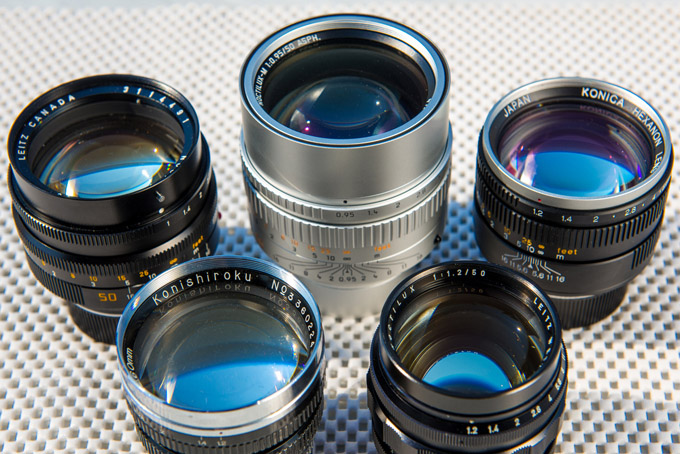
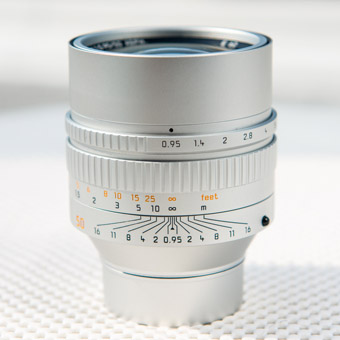
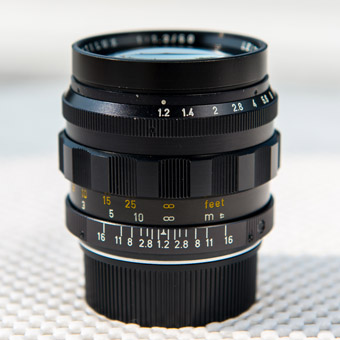
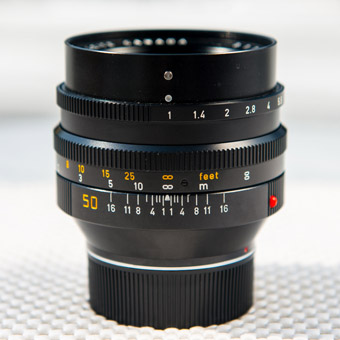
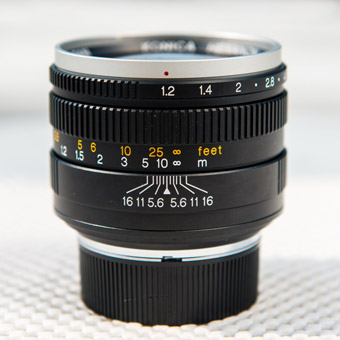



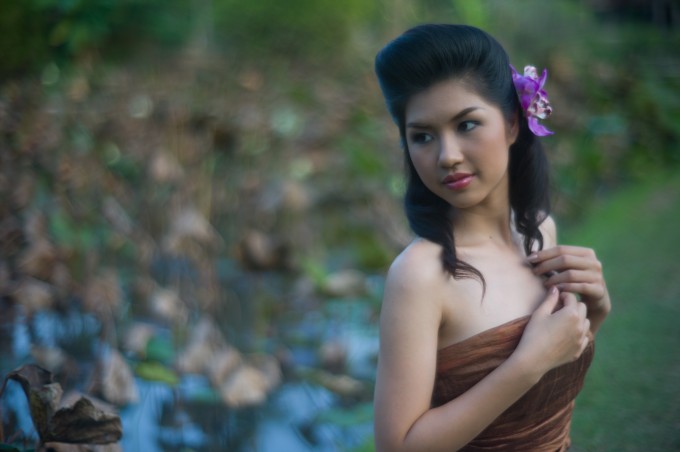
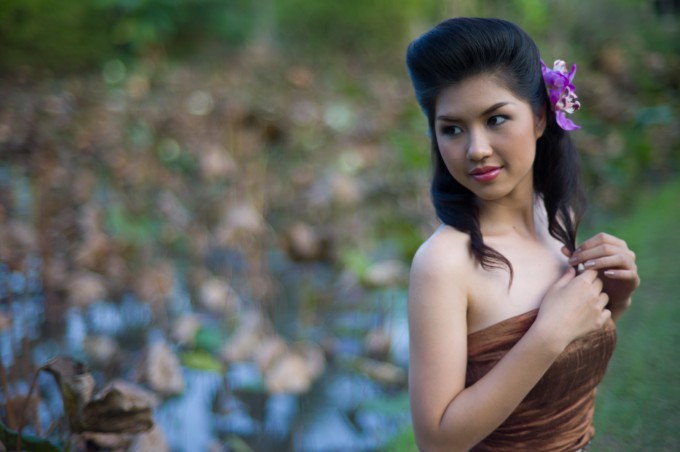

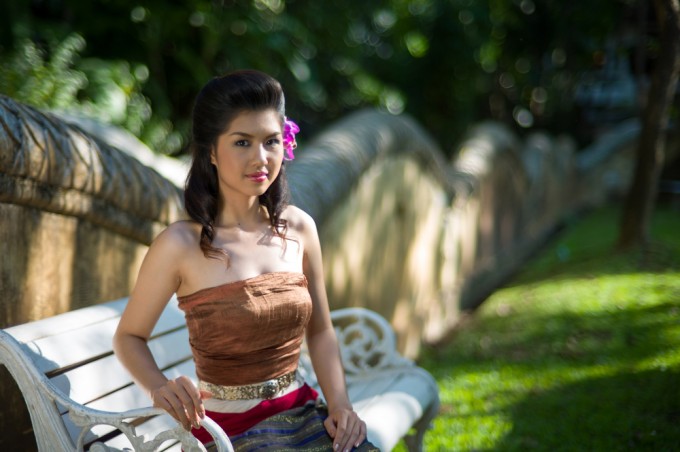
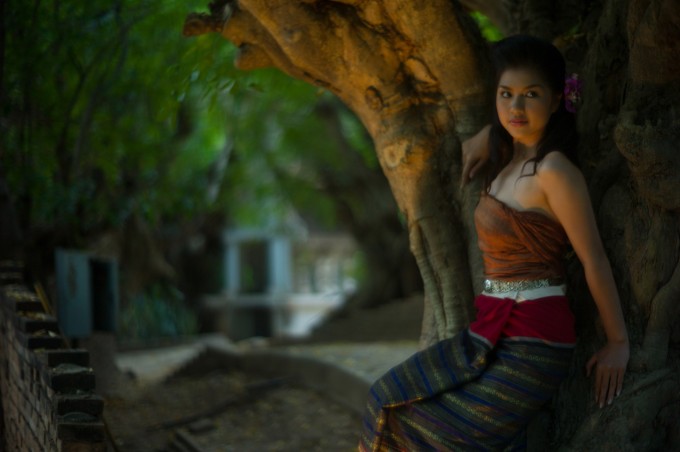
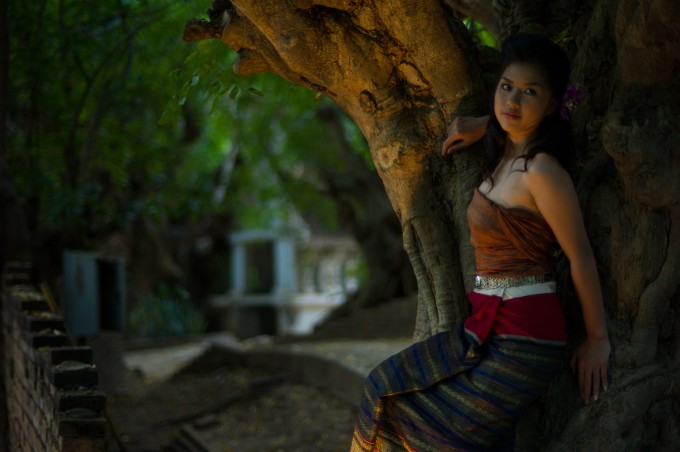
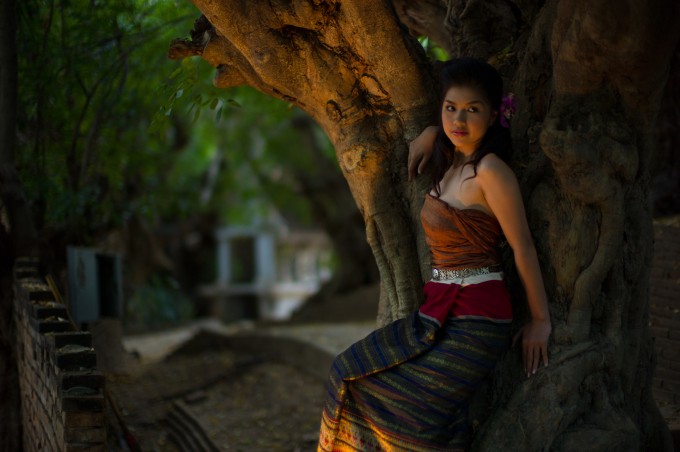
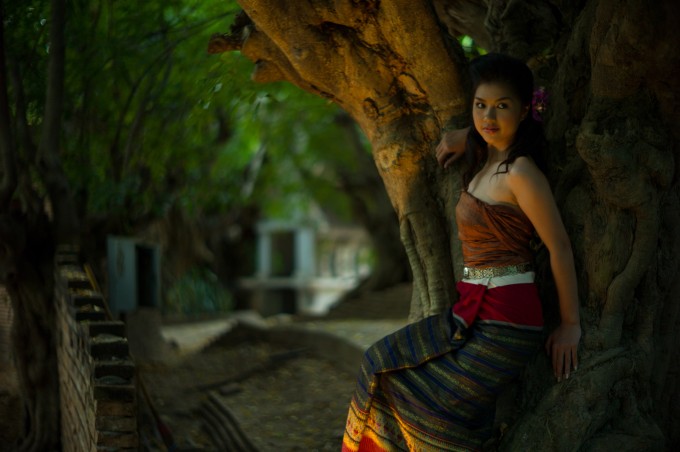
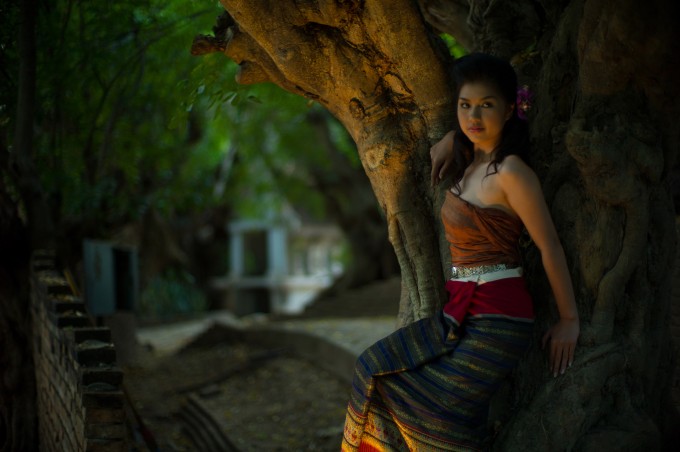
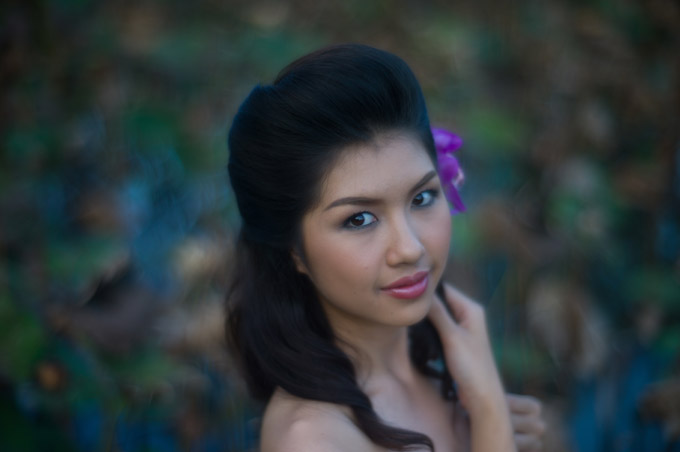
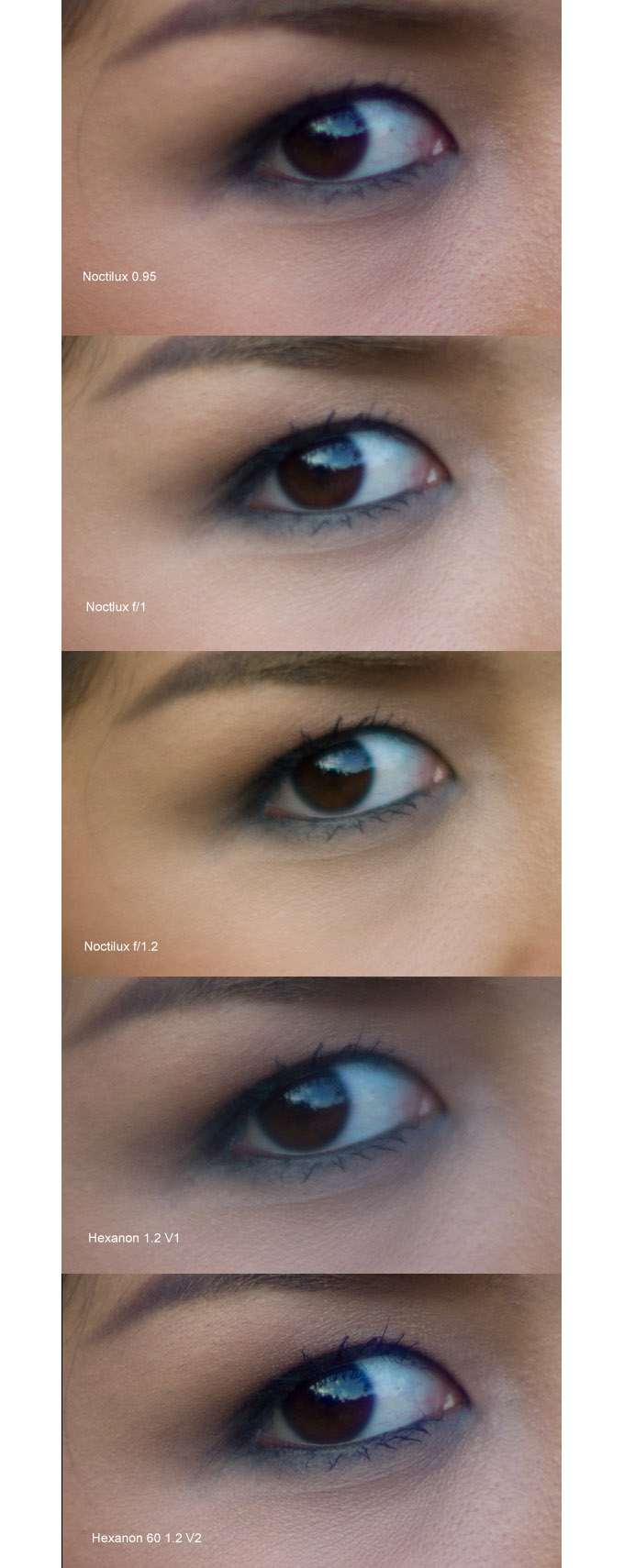
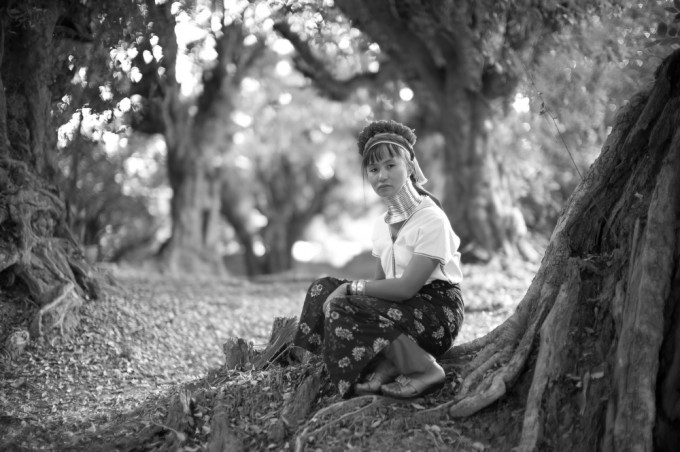
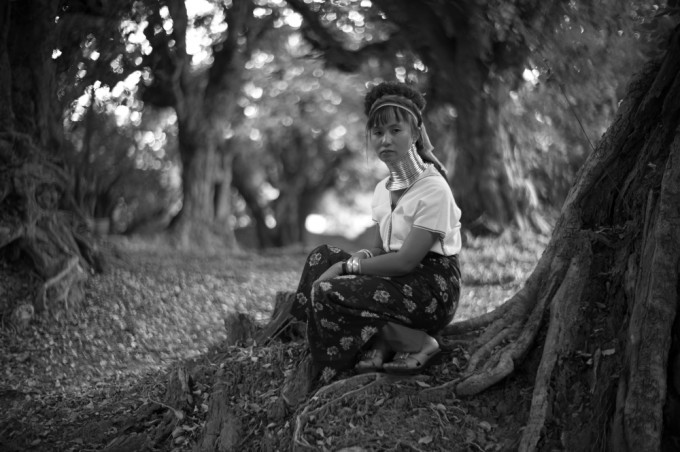
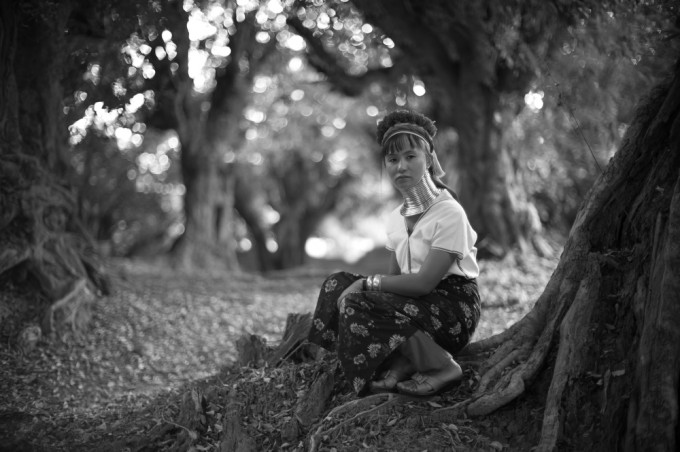
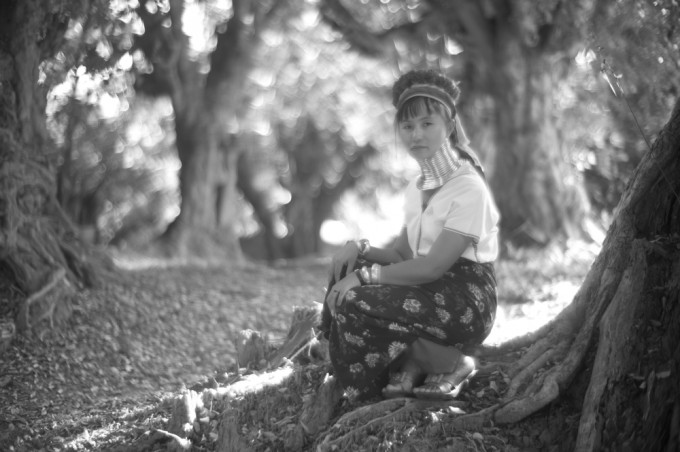
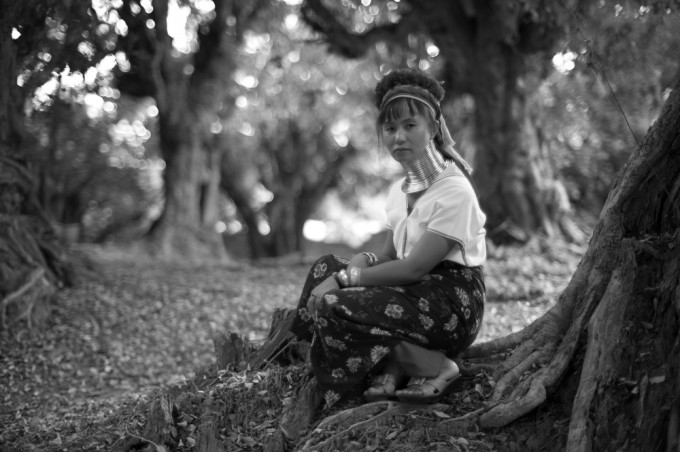
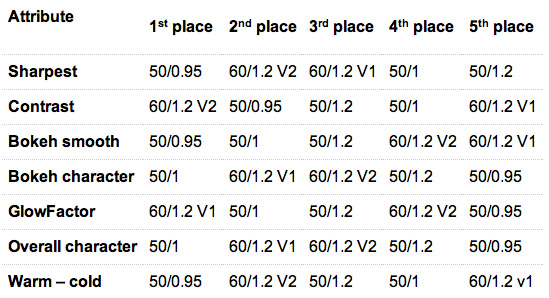


Amazing, every lens in test has disgusting bokeh.
A critique:
I have been in Burma and you know, Karen Women don’t like to be jail with that “Necklace”. I declined to take photos to them because they are kidnapped and forced to carry that “stigma”, I will repeat: FORCED. The pain on their Necks and backs is FOREVER and that has no cure. Your photos are perpetuating that painful and machist tradition. You are responsible of the photos you take, the “new tradition” of take photos of the Giraffe Women condenm them to PAIN. You must know this SHOW are ruled by Mafias who kidnap girls to put on them that chain and make money with the show. No single woman wants to have that thing on her Neck.
Steve, come on, you are smart and sensitive enough not to do that.
Best Wishes,
Antonio.
I thought you did the Photos, was kristian Dowling.
But, they are on your website.
Outstanding Test!
I feel spend high price to buy Konica Hexanon is really stupid!
They all have shit bokeh. New Hexanon and Noci are slightly sharper than the rest.
Great article, thanks so much for going through the effort. The photos and the choice of subjects is also worthy of mention. Hard to conduct such a comparsion in that manner.
The Hexanon V2 for me is the winner, but I would love to have any of them. Thanks again for your efforts.
Off topic but usually the Hermes edition for the cameras is a change in leather but with the lens.. its.. a change in painted number? lol
Jason, that I am not sure of as the camera is (unfortunately) no longer with me.
Wonderful article! Really well done with a great variety of images and crops. Certainly one of the best articles of it’s type that I have seen.
And good job Steve for hosting it!
One of the few Leica lenses I intend to keep is my cherished 50 Noct f/1. I’ll be shooting it on my M3.
I also agree the new Leica M will open things up in the RF world. But, since I have largely replaced my digital M system with a combination of micro 4/3’s and the Sony RX1 I am more interested in the focus peaking world.
-Bill
Fashion Meets Fighting
http://www.hatakeyamagallery.com/april-2012-bill-fulcher/
My God. Now look what you’ve done! I cannot stop thinking about that Hexanon V1- Such impressionistic bokeh and the sublime glow! Admittedly, I am fond of the technical perfection both the 0.95 and 1.0 Nocktilux. Indeed it is difficult to discount the distinct and individual qualities of any of these lenses. But if I had to ask myself, “which lens do I want for color portrait”, I would have to defer to the lens that demonstrated itself as most extremely unique. For me it’s the Hexanon V1. I do not think I could ever be disappointed with a photo from its iris.
Now if I could just find that lens and a bottle of 23 years old Pappy VanWinkle Reserve, my life would be complete.
Yes me too Mojo. I m in love with the original Hexanon for it;s glow and low contrast with nice sharpness for black and white. Not overly enthusiastic about using it in color but on the Monochrom, with a little processing gives so much latitude for creative control that I got excited every time I pressed the shutter.
That is a special lens and one I am fortunate to have used, even for such a short time.
Hi Kristian,
Very interesting article, and my compliments to you for the work you must have put into it – I don’t believe people fully realize how much effort goes into conducting a comparison like this.
I’ve owned and used three of the lenses in this comparison, and my experience with them is similar to yours. To this day, one of the more popular lens report articles on my site is the one discussing the Konica 60/1.2 (modern). I too sold mine.
Once again, great work.
Cheers,
Peter.
Hi Peter thanks for your comments, you have a great site that I recommend people lease check out, especially on your experiences with the Hexanon V2. yes the review wasn’t easy to do, and I would have loved to go into much more detail but I had to compromise with time and energy and happy that many appreciate it for what it is, given it’s limitations.
Cheers mate
Thank you Kristian, that is extremely generous of you.
Peter.
Nice work here Kristian. Please, more of this kind.
Thanks Miro….this is an every now and then thing for me. I’ll leave this to professionals like Steve and other great enthusiastic writers.
Writing a review implies getting facts straight.
The Noctilux 1.0 was introduced because the 1.2 was too difficult to produce. The hand-grinding of the asphericals for these lenses was so difficult that more than 80% was lost in the production process.
The 1.2 was produced from 1966 till 1975 and was the world’s first aspherical camera lens.
Sorry if my facts were crooked….
I’ve had a hard time keeping them straight since getting sober 😉
What an exceptional review. Thank you for taking the time to create this comparison. Nice work indeed.
One issue with older lenses is what are the condition of the elements inside? Without taking the lens apart it can be difficult to say. The older Konica looks to have some issues with the elements. I have a Canon 50mm f1.2 and it’s very similar in terms of glow but i know for a fact that one of the elements has problems which is causing this. Personally i like it but it’s not a true representation of the lens – so these are just examples of particular lenses and can’t be taken as an overall comparison.
I also have the Nokton 50 f1.1 (nice – why wasn’t it included) and the Mitakon 35mm f0.92 (very nice for what it is although i don’t think it’s full frame)
cheers
paul
Good points Paul. I think I mentioned somewhere that these lenses were not representative of the actual lens as they may be subject to sample variation, and yes the elements may have issues but from my experience the Hexanon V1 performed as expected and I certainly appreciated it’s performance, especially in Monochrome.
I didn’t include the Nokton as it wasn’t in my friend’s collection and was happy comparing the top lenses, as they are the most expensive and sought after – not necessarily because they are the best performers. As you can see there is no clear winner, the Nokton (although not a favourite of mine) is a worthy competitor and for the money would represent the best performance for price if one has the need for speed.
great review! i enjoy reading the article. but your pointing out the price-to-performance of the f/1.2 noct may not be unfair in my opinion. The lens go through a lot of collector’s premium, if you will, it being rare and Leica and all. Other older 8-element 35 cron, 35 lux v1 also get boosted up with collector’s premium, it’s ridiculous; but this is the Leica world.
Hi Tonki-M, yes the older generation lenses are building a lot of fame recently because of the way the Monochrom utilizes every drop of their performance. Almost every lens I’be used on the Monochrom looks sharp, including the Summarex 85/1.5, which is known to be very soft wide open.
Expect lenses in all categories to sky rocket once the new M is released, especially rare lenses.
Great work Kristian ! Thanks for sharing !
Kristian, a real tour de force among specialized testing of rare, hard to obtain lenses for the Leica rangefinder system. Of times it’s hard to quantify the precise nature of a lenses performance, especialy when dealing with the subjective nature of how a lens presents an image, but you did a marvalous just of describing the nuances of each lenses in a wide variety of ways. No one test can be “all comprehensive” and you kept your testing to a well defined group of objectives and then began to describe your findings. Well done sir and it will be a vauable point of reference for many who seek out these very unique lenses or alternatively for those that simply want to see what all the hallabaloo is about and come to their own conclusions. Thanks for making the effort to share this with all here!
Dave (D&A)
Thanks Dave, I certainly don’t pride myself on my writing ability, so I’m grateful to hear you enjoyed the review.
I felt that having the access to these lenses, I had a responsibility to share it with others and this was the best way i knew how. Doing this review also meant sacrificing my time to use these lenses like I normally would, so I appreciate that people like yourself have found it useful and helpful.
Your RF camera better be spot on in focusing. For this kind of lens and cost. An SLR would be better. For one cost, you can buy a 5d mk3 and 50mm f1.2. Two, focusing would be easyer. A great artical, well done and very imformative.
Thanks Karl. Yes you’re very right and at the end of the day it isn’t the camera taking the better picture- it is the photographer. There are some that prefer the quirks and challenges of a rangefinder, regardless of the Leica brand, and find SLR’s to be a barrier between themselves and the subject. I prefer rangefinders (though I use SLRs more often for work) because I feel more connected to my subjects.
I think the new M with focus peaking and live view will open the rangefinder market right up, enabling anyone to be able to accurately focus these lenses, though it does change the way in which the user obtains their pictures. Personally I’m a 17 year user of Leica M rangefinders and enjoy using them for the style of which I obtain focus and have learn (albeit painfully) to overcome the challenges.
But you may see I didn’t always nail the focus and didn’t focus bracket either for this review as I was under pressure from losing the light.
Karl, I would rather take my chances focussing with fast glass on my old M8 than my 5D2….much moe accurate from my personal experience. Sure, the DSLR has liveview and then you are guaranteed to nail focus, but for me I only use that mode for slower shooting (landscapes and tripod).
Am I wrong for preferring the Hexanon 60 1.2 V2? So darned sharp and creamy at the same time.
David the Hexanon V2 is my favourite and wish I never had to sell mine so you certainly are not wrong…..and honestly there is no wrong in preferring any of these amazing lenses
Fantastic article, Kristian. I would say the OOF/Bokeh is very subjective, and I like how you broke up smoothness vs character. I think that adds a fantastic wrinkle to evaluating any lens, let alone superspeed lenses that you have tested here….thanks for sharing this set, as it may never be done again in the way that you have assembled the kit that you have had access to…
Thanks Ashwin. I’m glad you and others appreciated it and happy to have it on the web’s number 1 Leica blog.
I had a lot of fun with these lenses and the owner will continue to make great use of them as he uses his lenses as much as anyone. I recommend taking a look at his work here: http://www.suwanmongkol.com
He is also on Facebook under ‘khunchild’
Great article Kristian! I always love hearing your thoughts and opinions. Most of all, I love looking at the wonderful pics you take.
Cheers Gage much appreciated.
Very nice comparison. I loved my 0.95 but couldn’t really afford to keep it. To me it’s the technical winner but if I had to choose one it would be the KH V2. I didn’t know the price is that high now.
My own experience and feeling also bpalm
Great comparison Kristian! Did you shoot these with M9 Titanium or Hermes?
Thanks for all the comments so far and glad many found it interesting. Let me just add a few things here. I compared these lenses because they are the top, most expensive and sought after lenses for the M. These were what I had access to and I did what I could in the short time frame. My evaluations were based on various samples, not only the ones you see here. I provided several other samples and Steve provided what he felt was best. Obtaining 100% focus in every sample is unachievable unless I focus bracket quite a bit (on a tripod) and that was not possible at the time.
I have used and owned 3/5 of these lenses so I also included that experience into my overall findings. Thanks for the comments so far and thank you to Steve for presenting it on his great website.
Also please excuse my poor writing skills 🙂
a lot of the photos on your website are great.
Cheers Oliver, appreciate the feedback.
Welcome, i was just honest : )
I know! Kristian used to have music on his website and I would often come home all tired from work and just get lost looking at his website. So beautiful I can weep. My favorite photo being the Superman photo on Sunset Blvd.
Another writing masterpiece by the world’s greatest photographer!
hahaha, in my own drreams yes David 😉
Actually the Zeiss Sonnar F1.5 should have joined the test.
F/1.5 is not super fast, hence it wouldn’t be included. Read title again. Then again.
Plus the Sonnar would have back-focussed on every shot….
Just kidding I loved that lens but the focus issues with it were just awful.
I would have expected the Sonnar to have front focus issues wide open as Zeiss said the lens only performs normal at f2
And another sucker is born.
For me, the Noctilux 0.95 really stands out for its refinement. Its very refined look is a great achievement for a lens of this speed. It doesn’t overpower the image with swirly or muscular bokeh. However, the Noctilux 1.0 seems to have resulted in the most accurate focus in the first set of photos. This is evident when you click through to the higher res versions.
Hi Kristian
What a treat to be able to compare those lenses first hand. A very interesting read indeed.
I am lucky enough to have recently acquired the Konica Hexanon 60/1.2 V2 and already I can see its going to deliver on the MM and M9.
Cheers, Jason.
Yeah that V2 looks like it might produce some really nice contrast and tones. The V1 on the other hand…..!!! Looking forward to your photos once you get hold of it Jason.
John, links to higher res images are already there. Just click through.
Hi Kristian, thank you very much. That is a lot of work getting this report done. How did you get your hands on all those wonderfull lenses?
I have a personal dislike for the way the Leica Noctiluxs’ seem to sharpen up at the edges. The Hexanon V2 is a very interesting lens, as demonstraded by (I hope it is OK to post a link outside of this site) http://www.yanidel.net/ Would it be possible to post links to higher res images that we could look at, please?
Unfortunately all of these lenses are waaaaaaay outside my price, but if I win the Lotto…
Thanks, John.
I got my hands on these babies via a good friend of mine who happens to own them all. The V2 Hexanon is the best overall lens IMHO and I’d give up a kidney to own it again, seriously 😉
I’d be interested to know what the lens owner feels about his Monochrome now. I was lucky enough to stay there and meet him on the first day he was using it.
The owner loves the Monochrom and using it has reignited his passion in shooting Leica, which is why he has recently acquired these great lenses.
Thanks Kristian. I’m delighted to hear that.
Kristian, excellent work on the test! A great reference for years to come.
You’re welcome Ed 😉
I have the Konica 50mm f1.2, but its out-of-focus highlights have rather hard edges – similar to the Konica 60mm version 2 shown here – and I MUCH prefer the soft, melt-away-to-nothing highlights of the Leica 50mm f0.95, except that its depth-of-field is TOO shallow for me.
It doesn’t keep a person’s head sharp – at usual portrait distance – from nose to ears, or nose to the back of the head. So I prefer the smaller, lighter 50mm f1.4 Aspherical Leica lens to the f0.95. The 1.4 keeps all of a head in sharp focus, and then everything behind disappears into softness, so that the head stands out crisply from the background ..not dissolving into it, as happens with the 0.95.
And the 0.95 is so big and heavy that it just goes against the ..or what was originally the.. Leica philosophy of small and lightweight!
I’ve ordered – and am waiting for – one of the small run of 50mm f1.1 lenses from Japan Exposures ( http://tinyurl.com/b4ynxrh ) ..it should have been here by now, but there’s been a few weeks’ delay in posting them out. [I’ll provide a review for you, Steve, if you want ..though you haven’t answered any email from me for a few months ..am I persona non grata!].
I don’t know how this’ll behave, but the price was $1250 / €959 / £778 – crazily (suspiciously?) low for a modern f1.1 lens http://tinyurl.com/abwzxgs – so it’ll be interesting to see how it performs ..on digital as well as on film.
I took lots of jolly pics in Chiang Mai a few years ago – and of the Karen people inside their dark encampments – with (I think) a Sony F828 ..a very versatile camera in its day, and still great in good light: I’ll have to dig out the pics and take another look at them. To my astonishment, the northern Thai countryside (which I’d expected to look “exotic”) seemed just like North Wales, especially so with the town’s English traffic lights, kerbstones and little cottage gates!
Thanks for all of these comparisons Kristian, but I’m not a “swirly bokeh” enthusiast ..I like out-of-focus backgrounds to just -m-e-l-t- into nothingness ..which is what the Leica 50mm f0.95 and f1.4 deliver in superabundance!
I’m looking forward to seeing many more of your articles here on Steve’s site!
I have the 50 Hex too! Beautiful lens, how do you find it compares to the 50 ‘lux?
We-ell, as I said “..its out-of-focus highlights have rather hard edges..” compared with the melt-away-to-nothing out-of-focus highlights of the Leica 50mm Summilux (the current aspherical one).
And it doesn’t focus as close as the Leica 50mm. It’s not as bitingly sharp as the Leica 50mm – when it’s actually in accurately sharp focus! Mine focuses slightly in front of what the Leica’s rangefinder shows, so I have to focus slightly beyond what I really want to focus on.
I’ve tried “shimming” it: taking apart the lens mount and fitting a thin spacer between the body of the lens and the mount – and so has Leica specialist Malcolm Taylor here in the UK for me – but it’s a bit hit’n’miss, and needs to be adjusted over and over again until it hits the “sweet spot” of perfect focus ..but it just seems too much trouble to keep trying to refine the focus. So I just focus a bit “beyond” with digital ..on a film camera it doesn’t seem to matter (because the film emulsion is thicker than the shallow surface of a digital sensor).
So it’s not my favourite lens: it’s big, it’s heavy, it doesn’t focus close, focus is a bit inaccurate ..sooner or later I’ll no doubt sell it. I suppose I only occasionally use it to reassure myself how wonderful the Leica 50mm is! ..And I’m waiting to see if it’s better – or worse – than the ‘MS Sonnetar’ f1.1 which is on order.
So, all in all, it was cheaper than the Leica 50mm so it was tempting, and I bought it (about three years ago), but it’s bigger, heavier, has less-pleasing ‘bokeh’, doesn’t focus easily, and doesn’t focus as close.
I don’t like it much! I really don’t find it “beautiful”. But that’s just me, perhaps.
I wish there was a lens that had the character of the f1 Noctilux and the sharpness of the 0.95. Tricky decision to make there…
soft soft soft
Smart comparison here! Personally my shooting a Monochrom/50mm f1.4 combo I’m quite happy, but it is great to see the comparison of these light gathering legends! Brilliant info to know how the Konica stacks up against the trio of Noctilux. I’ve recently had the opportunity to tryout 2 of the Leica 50s mentioned here and agree that it’s would take some practice to nail the focus wide open as you say. I’d also find it impressive how the Karen model keeps her poise through what I imagine was a few lens changes. Bravo!
I think if the SLR Magic HyperPrime T.95/50mm have join in comparison , it will beat them all,.in Contrast,sharpness and smooth melted Bokeh
I compared my Noct 0.95 to the HyperPrime and sharpness looks the same but I prefer the classic bokeh rendering of the HyperPrime. The Noct has a harsh rendering under certain lighting situations and this is there the Noct looses
I compared my Noct 0.95 to the HyperPrime and sharpness looks the same but I prefer the classic bokeh rendering of the HyperPrime. The Noct has a harsh rendering under certain lighting situations and this is where the Noct looses
I think that is why the HyperPrime was left out for a reason. Even the Nokton beat some of these lenses
http://www.stevehuffphoto.com/2012/02/28/quick-comparison-slr-magic-50-t0-95-vs-voigtlander-50-f1-1-on-the-leica-m9/
No lenses were left out for any other reason than the fact that I did not have access to them. I have no issues comparing cheap lenses to expensive ones, as I am a firm believer that the Nokton 35/1.2 is the best performing fast lens for Leica, but these were interesting to compare as they are the most expensive and sought after lenses.
….also, at what point do you stop comparing? 😉
Maybe…but would it still be holding together in a few years?
Or would it work properly to begin with?
Not sure about the Hyperprime as it’s not a lens I’d personally consider as it hasn’t proven itself over time to be considered into this category, IMHO. Not being snobby….but also I didn’t have access to this lens at the time of testing.
‘Not sure about the Hyperprime as it’s not a lens I’d personally consider as it hasn’t proven itself over time’
Gee, and we wonder why they stopped making it. Seriously though….it’s not like Leica products are ever without fault. Besides….for the price of a Noct you could buy (2) Hyperprimes:)
Hardly anyone owns one, and it certainly doesn’t have any track record to speak of in terms of reliability. I can be reasonably sure that in 20 years I’ll be able to get my Leica products serviced too. Actually very few people “wonder” why they “stopped making it” (selling it to USA that is).
And another sucker is born.
For what ever reason you are so angry at the world I hope you find some peace.
And another sucker is born.
Jonny, why would you think that you couldn’t get a Hyperprime ‘repaired’ in 20 years?? The lens is fully manual with zero electronics. If a lens tech can repair a Leica they could easily repair a Hyperprime.
That was an interesting test. I would have been interesting to see the Voightlander 1.1 in the test also.
Kristian (nice name haha), The Nokton is my least favourite 50mm due to it’s rendering of bokeh at 1.1, but it is great value for money if you need the speed as apposed for effect.
Outstanding Test!
That .95 Noctilux is just incredible. In my opinion the absolute clear winner.
I like the rendering of the 1.2 Noctilux but not the softness.
That Hexanon just makes me feel ill.
Thanks for test!
The Hexanon ver II sharpness is the best in this photo set. Am I not seeing what you are seeing? Thr comparison looks as if the eye is out of focus in some of the comparisons.
The eye IS out of focus on some. The Noctilux 0.95 for example looks front focussed. It also has less depth of field.
My comment about the Hexanon was it’s rendering of Bokeh. I just don’t like it.
Yes the Noctilux has serious focus issues. I had it repaired two times and it is never spot on. Always front or back focus. Or maybe it is a camera issue. Either way fast lenses seem to have this issue for Leica system
Try it with a Tripod. The DOF is so thin, if you ore the Model moves between focusing and taking the Shot., the Focus will be off.
Either way, those lenses aint different than a 1.4 lens, and whatever difference there is, isnt even worth a couple of bucks…let alone hundreds or thousands. Are you folks that obsessed with minute variations? And from 1.4 to 1,2 do you think there’s even worthy variation to even justify getting such a lense or even making one? It seems rather narcissistic….camera and lens narcissistic that is.
there isnt even a worthwhile difference between the hex and the leica. there is more variation between a grain of salt and another grain of salt.
JJ you sound really bitter and jealous. Did your entitlement check not come today?
Hahaha, you’re so funny. Don’t quit your day job. oh, wait, you don’t have a job, that’s why you’re here. LOL You sound like a SUCKER waiting and willing to buy anything stupid that comes out of a factory.
And another sucker is born. Do yourself a favor andbuy the pet rock…i hear it has good low light capabilitites and bokeh. lol
Definitely like the Noct f/1.0 the best out of these.
LOL. Are you sure? the difference between the lenses isnt even ten dollars worth. When will people stop buying such useless lenses?
There is definitely a difference that the 1.0 has over the other Noctilux’s. The bokeh has this swirly look to it that I absolutely adore.
While I agree that the prices of these lenses is ridiculous, they are not useless. They do have their own style, and for people that shoot in that style, it’s definitely a great lens to have.
I however am still happy with my $100 Super-Takumar 50mm 1.4, and probably will never be unhappy with it.